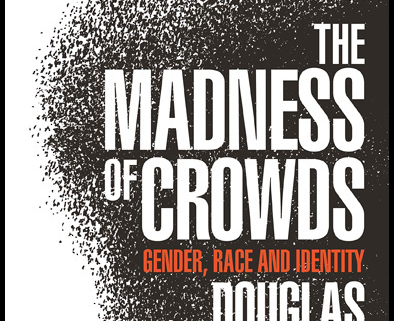Feeding the Dragon: The Left Want Power and Revenge, Not Equality and Justice
Rights for snakes! Yes, imagine that the Western world is swept by a movement for the liberation of snakes, spiders, scorpions and all other creatures whose naturally gentle and harmless natures have been corrupted by millennia of human bigotry and mistreatment. Tough laws are passed making it an offence to discriminate against these historically oppressed animal groups, which begin to enter buildings, cars and all other human spaces in ever larger numbers.
Mad to the Max
After several decades of this snake, spider and scorpion “uplift,” a conservative writer publishes a book called The Madness of Mandibles in which he ponders why snakes, spiders and scorpions are biting and stinging people more than ever, despite being given all they could ever have wished for. “They’ve been granted equality, so why aren’t they behaving like humans?” the conservative writer asks in bewilderment.

The Madness of Crowds by Douglas Murray
That’s a ridiculous scenario, of course. A conservative writer would never be so stupid. Or would he? I have my doubts, because I’ve based that scenario on a real conservative writer called Douglas Murray, who has just published a book called The Madness of Crowds that seems to be pretty much as stupid as The Madness of Mandibles. Murray’s book was reviewed by the part-Jewish political scientist Eric Kaufman in the Financial Times:
How did our societies become so insane? In The Madness of Crowds, Murray argues that it’s because highly educated people cling to a new religion known variously as “social justice”, “identity politics” or “intersectionality”. Essentially this is the old Marxist faith poured from the class bottle into the race-sex-gender one. Meaning is realised through struggle against those who commit wrongthink.
Identity politics helped reduce prejudice but, having vanquished its foe, began manufacturing phantom enemies. Murray, following the late conservative political theorist Kenneth Minogue, dubs this “St George in retirement” syndrome. Having slain the dragon, he charges off in pursuit of ever-smaller ones and ends by “swinging his sword at thin air, imagining it to contain dragons”. (The Madness of Crowds by Douglas Murray – Slay the dragon, then stop, The Financial Times, 11th October 2019)
As you can see, Kaufman’s review has the subtitle of “Slay the dragon, then stop.” That is Murray’s injunction to the practitioners of “identity politics.” Once they’d slain the dragon of injustice and oppression, they should have stopped their campaigning and become good little liberally democratic boys and girls (and trans-boys, trans-girls, gender-fluids, etc). Read more









